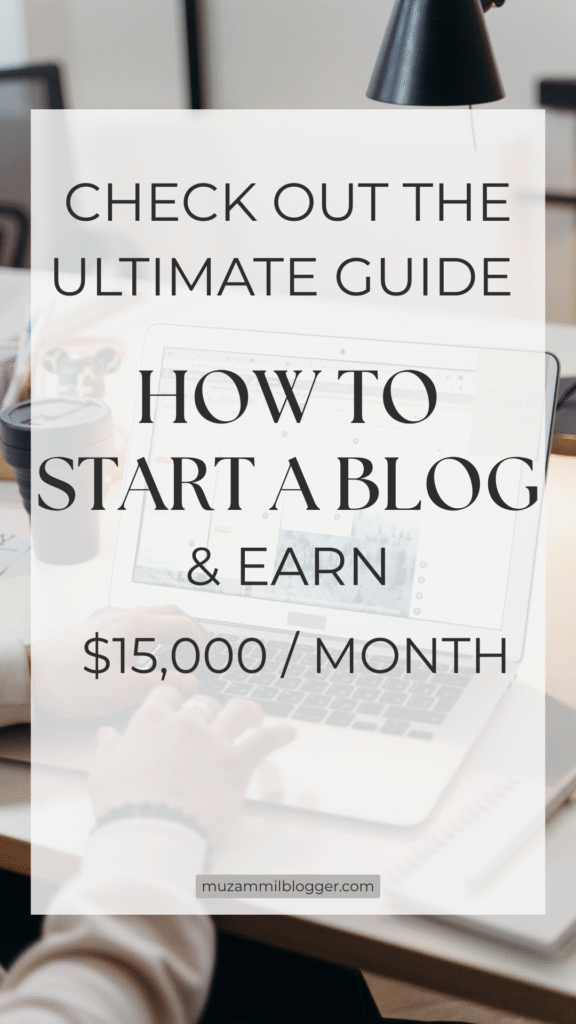Let’s get one thing straight—blogging isn’t dead.
In fact, it’s far from it.
It’s just changed. Evolved. The same way every other online business model has. While the internet is louder and faster than ever, blogging in 2025 remains one of the best ways to build a brand, grow passive income, and reach people all over the world—if you do it right.
What hasn’t changed is this: most people start a blog with big dreams and then… give up.
They choose the wrong topic. They write random content with no real purpose. They ignore search intent, skip SEO, and never quite figure out how to make money from it. And honestly? That’s totally understandable—there’s a lot of noise out there, and it’s easy to get overwhelmed.
But here’s the good news: you don’t need to be a tech wizard, a marketing genius, or have a million followers to start a successful blog this year. You just need a strategy, some patience, and a willingness to show up.
Let’s break down exactly how to make it happen.

The State of Blogging in 2025
If you’re wondering whether blogs still matter in a world full of TikTok trends and AI everything, here’s some real data: over 77% of internet users still read blogs regularly, and blog content still influences more than 60% of online purchases.
In other words—people are still Googling problems, looking for advice, researching before they buy. That’s not going away. In fact, as content gets noisier, there’s more opportunity for clear, helpful, trustworthy blog content to stand out.
But the format has evolved. Blogging is no longer personal diary entries or rambling thoughts. It’s about writing useful, strategic, well-researched content that helps real people and—bonus—can generate real income.
⸻
Picking the Right Topic (This Matters More Than You Think)
This is the part where most would-be bloggers stumble before they even begin.
They start a blog because they “like cooking” or “want to write about lifestyle,” but don’t think about who they’re writing for—or whether that audience is even searching for what they’re offering.
The most successful bloggers in 2025 are laser-focused. They choose a blog niche with real audience demand, room to grow, and clear paths to income. That could mean blogging about personal finance, sustainable living, AI productivity tools, mental wellness, or freelancing—whatever you choose, it needs to align with what people are searching for and what you can speak on consistently.
Tip: Tools like Google Trends, Ahrefs, and Ubersuggest will show you exactly how many people are searching for your topic—and how hard it will be to rank for it.
⸻
Starting Your Blog: The Tech Doesn’t Have to Be Scary
Let’s be honest—setting up a blog can feel intimidating at first. Domain names, hosting, plugins, WordPress themes… it’s a lot of new vocabulary.
But it’s not as bad as it seems. With just a few clicks, you can have a site up and running that looks polished and professional.
You’ll start by grabbing a domain (keep it short and easy to remember), then choose a reliable hosting provider. Many beginners go with Bluehost or SiteGround because they offer simple WordPress installations and solid support. Once WordPress is set up, pick a fast, mobile-friendly theme like Kadence or Astra—both great for loading speed and customization.
A few plugins will help optimize everything behind the scenes. Use Rank Math or Yoast for SEO, WP Rocket for speed, and UpdraftPlus for backups. Once those are in place, your site will be clean, functional, and ready to attract traffic.
⸻
Writing Content That Gets Read (and Found on Google)
Here’s the truth: even if you post the most beautiful blog in the world, it won’t mean anything unless people can find it—and unless it helps them.
That’s where SEO-friendly blog posts come in.
Don’t worry, this doesn’t mean stuffing keywords into robotic sentences. It means understanding what your audience is typing into Google and creating content that answers those questions better than anyone else.
Start by identifying key topics in your niche. Then, use keyword tools (like SEMrush, Keywords Everywhere, or even Google’s “People Also Ask”) to dig into what your audience is actually searching for.
From there, create high-quality blog posts that are helpful, in-depth, and easy to read. Long-form content—around 1,500 to 2,500 words—is still favored by search engines. Use clear headings, short paragraphs, visuals, and real-world examples to make your posts stand out.
Pro tip: Creating content clusters (where multiple related posts link back to a main “pillar” article) helps boost your authority in Google’s eyes.
⸻
Getting Traffic Without Spending on Ads
You’ve written the post. Hit publish. And then… silence?
This is where new bloggers often feel defeated—but it’s totally normal. Building organic blog traffic takes time.
Instead of paying for ads, focus on free traffic sources that actually work:
- Google search (SEO-first content is king)
- Pinterest (a visual search engine that’s amazing for lifestyle, food, wellness, and DIY niches)
- Quora and Reddit (answer questions, provide value, and link to your posts naturally)
- Medium/Substack (repost content to expand reach and grow your email list)
- LinkedIn or Threads (especially if you’re in the career or creator space)
Consistency is the key. Promote each new post in 2–3 places. Over time, traffic builds—and it compounds.
⸻
Let’s Talk Money: How Blogs Make Income in 2025

So yes, blogging can absolutely make money. And no, it doesn’t require millions of pageviews.
Here are a few proven ways bloggers are earning right now:
- Affiliate marketing – You recommend products or services, and earn a commission if your reader buys. Think Amazon, ShareASale, or digital tools.
- Display ads – Once you’re hitting 10K+ visitors/month, you can apply to ad networks like Ezoic or Mediavine. These pay you based on impressions.
- Digital products – Ebooks, templates, online courses. These are especially powerful because you create them once, and sell them over and over.
- Email monetization – Build a list, nurture your readers, and promote valuable offers via newsletters.
- Sponsored content – Once your blog gains authority, brands will pay to be featured.
Even if you’re only pulling in 1,000 visitors a month, you can start small—with affiliate links and digital products that align with your content.
⸻
Don’t Ignore Your Email List
This is the step most new bloggers skip—and often regret later.
Your email list is where the magic happens. It’s where traffic turns into trust, and trust turns into revenue. Unlike social media (which you don’t control), your email list is yours.
Start simple: offer a helpful freebie—like a checklist, guide, or template—and ask visitors to opt in. Use a platform like ConvertKit or MailerLite to manage everything.
Then, send value-packed emails once or twice a week. Share stories. Ask questions. Link to new blog posts or product recommendations. Over time, your subscribers will become your most loyal readers—and your best customers.
⸻
AI Is Here to Help—Not Replace You
Yes, AI tools are everywhere now. And yes, they can be incredibly helpful for bloggers. But here’s the thing: don’t let AI steal your voice.
Use tools like ChatGPT to brainstorm headlines, generate outlines, or repurpose content. But when it comes to the writing itself, bring in your personal experience, your perspective, your tone.
The internet doesn’t need more robotic content. It needs more human connection. That’s where you come in.
⸻
Keep Going—Even When It’s Quiet
Here’s a hard truth that nobody loves to say: blogging is slow in the beginning.
You’ll spend hours creating your first few posts. You’ll hit publish. And maybe… nothing happens.
But that’s part of it.
Blogging is a long game. Every post you write is an asset that works for you over time. Every new visitor is a potential subscriber. Every email you send is a chance to build trust.
The bloggers who make it? They’re not the best writers or the savviest marketers. They’re the ones who didn’t quit after month three.
If you can stay consistent, keep learning, and show up with genuine value—you will grow.
⸻
You Don’t Need Perfect. You Just Need to Begin.
If you’re sitting on the fence wondering if blogging is worth it in 2025, here’s your answer: it is. But only if you’re willing to treat it like the real business it can be.
You don’t need a massive audience or a tech background. You don’t need to have it all figured out from day one.
You just need to care about helping people, commit to showing up, and give yourself permission to start messy.
Start with one blog post. Then another. Keep learning. Keep improving. And before long, you’ll look back and realize you’ve built something powerful.
